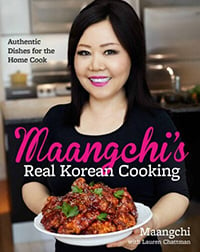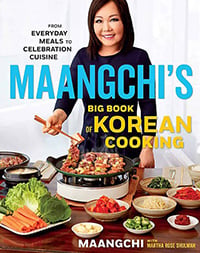Maangchi's Amazon picks for thin wheat flour noodles
It's always best to buy Korean items at your local Korean grocery store, but I know that's not always possible, so I chose some products on Amazon that are good quality. See more about how these items were chosen.
These wheat noodles are very thin and white and are used in both hot and cold dishes. They are delightfully chewy! When using them in dishes, it’s generally best to get everything else ready and then cook the noodles last so you can enjoy them at their peak chewiness, before they go soggy.
You can find them in Korean, Japanese, and Chinese markets. Seal the package well and store in a cool place in the pantry.

Very very thin! Make sure to buy the right ones so your kongguksu will be delicious.


















Hey, isn’t it the same as japanese somen? Can’t find korean one ;(
I have Japanese noodles. It says “tomoshiraga somen.” is this the same thing?
With difficulty I deciphered the Korean letters (using an online hangul chart) on a random bag of noodles I bought at the Korean store: it says GUKSU SOMYEON. Can I use these only for Kongguksu like it says on this page or can I put them in Jajangmyun, Jam Pong, etc. as well? Because I don’t really like the idea of cold noodles (not to mention it’s winter here!).
Somyeon is my favorite noodles. I use it when I make noodle soup or bibimbguksu (mixed noodles with spicy seasoning).
To make tasty jjajangmyeon and jjampong, these noodles are usually used.
https://www.maangchi.com/ingredients/jja-jjang-myun-noodles
But who would care if you use the thin noodles in jjajangmyeon or jjampong? Try it out. Thank you for your question!
I’ve made Jjajangmyeon with those exact noodles and it still came out tasty…Uh oh! Now I’m hungry and I want to make some jjajangmyeon. Got to go!!! *Runs to the kitchen and starts chopping vegetables and pork*
I can almost hear you chopping vegetables, chop chop chop! : )
I could not find special noodles for jjajangmyeon, so I cooked some spaghetti and poured jjajang sauce over it, tasted delicious still!
Yes, spaghetti noodles will work well! Happy cooking!